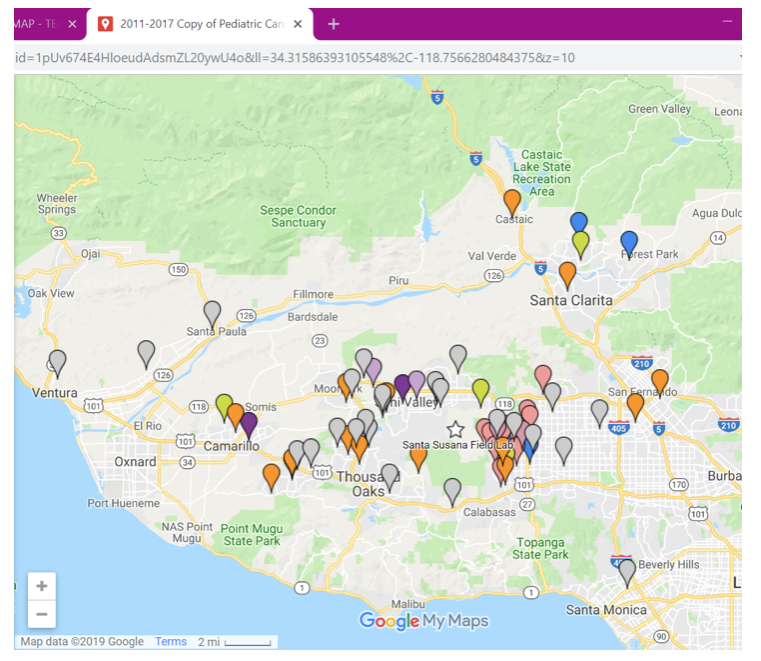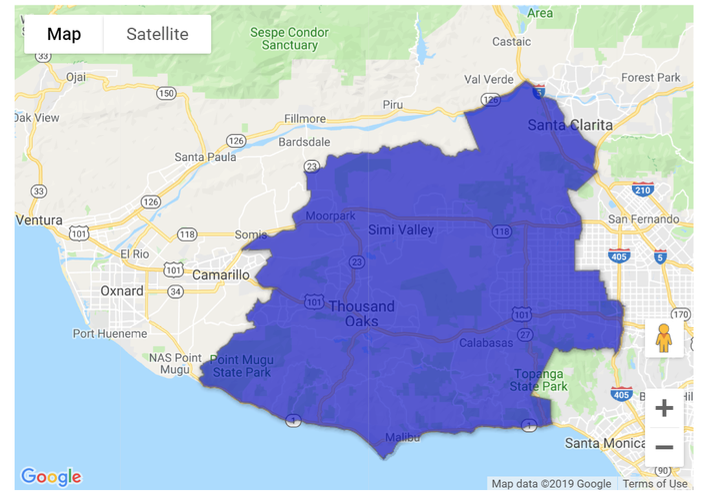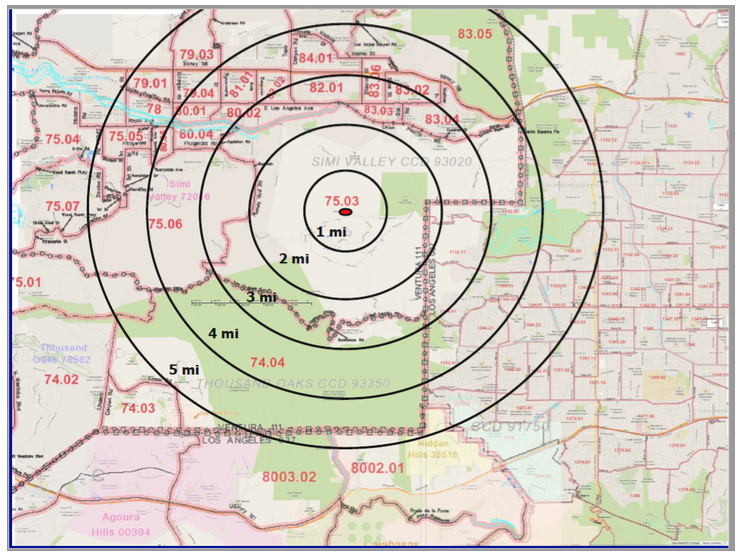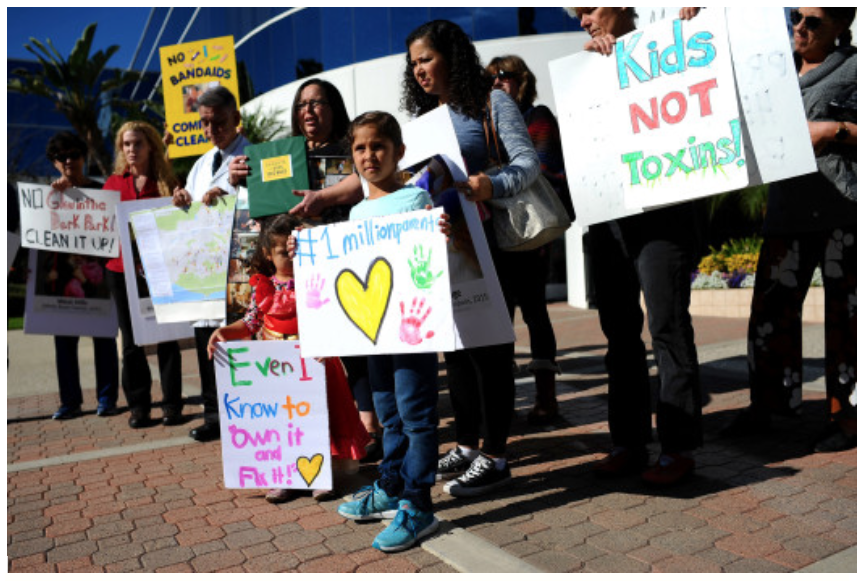CommentsCHILDHOOD CANCERS-A cancer diagnosis is upsetting at any age, but especially so when the patient is a child.
It's natural to have many questions, such as: Who should treat my child? Will my child get well? What does all this mean for our family? Not all questions have answers, but the information and resources on this page provide a starting point for understanding the basics of childhood cancer.”
My community of West Hills has become, according to one non-profit, “ground zero” for children’s cancers. A petition has been launched through change.org that has gone out internationally. This petition alleges that a young girl in West Hills got her cancer from the Santa Susana Field Laboratory. And has been on the Physician’s for Social Responsibility Los Angeles (PSR-LA) website.
Physicians – First Do No Harm:
This phrase: “Physicians – First do not harm” is attributed by an article in the Harvard Health Publishing, by Robert H. Shmerling MD, to Hippocrates and his work called “Of the Epidemics”.
Why do I say this? I am concerned that the physicians at PSR-LA are attributing children’s cancers to the Santa Susana Field Laboratory (SSFL) site without possibly knowing anything about these children’s personal medical history. Have the physicians at PSR – LA examined all of the children that are plotted on the maps that some of their Board members hold in public meetings and as they lobby? Have they reviewed the children’s medical records and their parent’s medical records?
Recently a staff member of PSR-LA and one of the children’s cancer patient’s mothers went to Washington, D.C., to visit members of Congress. They have been carrying a petition on change.org which I received, and which has been signed by more than 650,000 people worldwide. Signatures on this petition included countries of origin including Russia, India, and the U.K. – all over the world! How do these people around the world know the best way to cleanup the SSFL site? What do they actually know about the cleanup – some of the petitioners signed because one of their family members or someone they knew had cancer.
On PSR-LA’s website: https://www.psr-la.org/nuclear-threats/, they state:
“Radioactive contamination is dangerous to health and difficult to clean up. In LA’s own backyard, the Santa Susana Field Lab, site of a partial nuclear meltdown and other toxic accidents, spills, and releases, remains contaminated despite decades of community efforts for full cleanup.”
For information for new readers, please see: “Santa Susana Field Lab: Why Does LA want to Sue Them? What is LA Hiding?”:
Have the attorneys for PSR-LA informed the Board members at PSR – LA that in the current litigation of Physicians for Social Responsibility Los Angeles et al v the California Department of Toxic Substances et al, that the California Department of Justice has stated, as I said in that previous article, that there was no meltdown or partial meltdown at the SSFL site?
- Have the physicians in this non-profit been made aware of Dr. Hal Morgenstern’s and Dr. Thomas Mack’s health studies of adults related to the SSFL site? Why are they allowing people to misinterpret Dr. Morgenstern’s studies on incidence to imply future risks of cancers?
- Why doesn’t this non-profit have more employees who have a Masters in Public Health, have degrees in Health Education, or who are Health Physicists (for radiation risk), to read the documents and to advise them and the impacted communities regarding real risks?
- Who on their staff is qualified to read and review the technical documents related to the SSFL site? Does PSR-LA’s Executive Director read all of the SSFL related studies?
- Are the PSR – LA Board members aware of the cleanup at the SSFL site that has occurred historically under DTSC’s Imminent and Substantial Endangerment Order in 2008, historic cleanups of AREA IV, and the cleanups known as Interim Source Removal Actions ordered by the Los Angeles Regional Water Quality Control Board?
It is my opinion that PSR-LA is doing tremendous harm not only to my community but to residents of all Los Angeles and Ventura Counties by spreading misinformation related to “meltdowns”, “nuclear disasters”, and regarding health risks from the SSFL site. While I do agree that historically - when this site was an active site - there were more potential risks offsite from engine tests, and from burning of chemicals and I do agree that employees and their families may have been exposed to these chemicals. But this site is no longer an active site, and no agencies are indicating that there is any offsite risk today.
I ask of everyone – to have compassion and to use science regarding this and other issues related to public health.
Since I first began my SSFL journey in 2006, I began asking questions of epidemiologists and physicians after learning about children’s cancers and their presence in my community. I even consulted my own children’s pediatrician who lives in the local area.
In 2008, at an SSFL Workgroup meeting, Dr. Hal Morgenstern of the University of Michigan, formerly of UCLA, gave a presentation on retinoblastoma in children. This is the link to the PowerPoint presentation on retinoblastoma by Dr. Morgenstern.

Map of approximate locations of children in the California Cancer Registry data base with retinoblastoma from Dr. Hal Morgenstern’s PowerPoint
When I first became involved with the SSFL site in 2006, I was led to believe that there was a clustering of children’s cancers within about two miles of the SSFL site. As seen on this map, the SSFL site is not even in view, and the children’s clustering is south of the 101 freeway near Mullholland Highway. In fact, this “cluster” is not far from Topanga State Park where the Federal EPA did sampling for radionuclides for their Distance Test Locations study.
When I saw this map slide at this presentation on retinoblastoma, I pointed out to Dr. Morgenstern that there were numerous other industrial sites closer to this grouping than the SSFL site. To me at the time, if there were to be “clustering” related to a specific site, it would have occurred closer to the SSFL site. It isn’t.
After that meeting, I wrote to Dr. Morgenstern. He provided me with this PowerPoint, and Dr. Morgenstern responded to my questions in this manner; his answers to my questions are in blue below:
“Am I correct in understanding that:
1) we cannot tell from the data whether any of our known retinoblastoma children were included in the DPH study;
“Yes.”
2) you thought that the time frame and the large area taken into consideration did not allow the data to show the true pattern;
“Yes, something like that.”
3) there is a higher than predicted level of retinoblastoma in our area;
“That's not too clear from the results reported by the California Dept of Public Health, but I criticized their conclusions.”
4) we cannot prove that the retinoblastoma is caused by the SSFL;
“Correct.”
5) did you say that you are able to correlate the incidence of retinoblastoma with the SSFL or did you say that while the wind patterns from the SSFL look similar to the retinoblastoma data, we do not have enough data to say whether we have a correlation or not;
“The latter. Just to be clear: there is no solid evidence linking cases of Rb in the West Valley with SSFL.”
In September 2015, the California Department of Toxic Substance Control (DTSC) had invited a staff member from the Agency for Toxic Substances Registry (ATSDR) a federal agency under the CDC, to do a presentation. That presentation is here.
I was one of the Stakeholders that lives in the SSFL community that asked ATSDR to come to our community, and to research if they believed that the SSFL site was posing any risk to our community. I had the honor of meeting with Dr. Patrick Breysse the Director of ATSDR.
Unfortunately, some elected officials objected to bringing in the ATSDR to look at potential offsite risks. To this day, I wonder – Why? Why would you reject an independent study on offsite risk related to the SSFL site?
This is the letter that some stakeholders received after the elected officials communicated with Dr. Breysse.
Some of the people that protested Dr. Breysse’s staff doing this study included PSR-LA staff.
What PSR- LA may not have been aware of is that I had made a request prior to the request of the stakeholder that they reference in this article. And what PSR-LA does not seem to consider is members of the West Hills Neighborhood Council also voted to support ATSDR coming into our community to study whether we had any risks from the SSFL site.
At this meeting, a mother presented a map to DTSC staff of children with cancers surrounding the SSFL site. Since this mother has made this map public by sharing it with the DTSC Independent Review Panel and others, that map is found here.

Pediatric Cancers Self Reporting map 2017 which they state includes people outside of the 20-mile radius from the SSFL site. Please compare this map to Senator Henry Stern’s District map.

The area used for the children’s cancer map is greater than the map for this Senate District.
Senate District 27
Senator Stern represents nearly 1 million residents of the 27th Senate District, which includes Agoura Hills, Calabasas, Hidden Hills, Malibu, Moorpark, Simi Valley, Thousand Oaks, Westlake Village, part of Santa Clarita and the following Los Angeles communities: Canoga Park, Chatsworth, Encino, Porter Ranch, Reseda, Lake Balboa, Tarzana, West Hills, Winnetka, and Woodland Hills.”
In analyzing cancer incidence, cancers are studied per population size. The map of the children’s cancer represents about 50 children with cancer in a two-county area in an area of potentially more than a 1 million population size.
When I first received the children’s cancer map from one of the parents of a child with cancer, I contacted Dr. Thomas Mack who I referenced in my previous article:

Dr. Thomas Mack’s 5-mile radius map seen in the previous story can be compared to the children’s cancer map and the State Senate District maps above.
I did a “literature search” of each type of cancer that was listed on the children’s cancer map. I sent my studies to Dr. Mack when I asked him to research whether we had “children’s cancer clusters” in the West Hills area.
In time for the public comment period for the DTSC’s Draft Programmatic Environmental Impact Report for the SSFL site, Dr. Mack submitted the following letter to former DTSC Director Barbara Lee. He forwarded his email and its attachment to me for me to be able to submit before the closure of public comment on that document.
This is what he stated in that email to DTSC Director Lee:
“Barbara Lee
California Department of Toxic Substances Control
Sacramento CA
Ms. Lee:
I have been told of a petition being circulated to demand clean-up of the Santa Susana site based on perceptions of an increase in childhood cancers attributable to residential proximity to the SSFL site. I was asked by Childrens’ Hospital of Los Angeles to respond to such allegations on behalf of a concerned mother of a case of childhood cancer and her physician. I sent the appended letter after reviewing the cancer registry-based frequencies of occurrence, as I have previously done for adult cancers as requested by the DTSC.
I have no reason to disbelieve allegations that toxic substances can be found on site, and other conditions may have resulted from such exposure. However, to my knowledge nothing in the medical literature or empirical toxic assays at distant sites would support the proposition that any childhood cancers in Southern California are attributable to exposure to the Santa Susana Field Laboratory. Most of those have occurred far beyond the reach of any significant exposure, and the diverse histologic types have patterns of occurrence that differ, suggesting differential causality.
Thomas Mack MD, MPH
Professor of Preventive Medicine and Pathology, Keck School of Medicine of USC”
In conversation with Dr. Mack, I learned that he had made a presentation to physicians and staff at Children’s Hospital Los Angeles (CHLA). Dr. Mack sent me this summary letter of what he presented to the CHLA faculty.
Dr. Mack states:
“I examined 13 kinds of cancer in each gender in 130 different census tract-periods from 1988 to 2009 and found no evidence of a relationship between “offsite” residence and cancer incidence.
None of these studies considered childhood cases. I was recently asked by the State, by CHLA, and by some groups of local residents (understandably, residents are not in perfect agreement about the best course of action) to re-examine offsite risk, this time with attention to childhood (0-14) cancer and leukemia in particular. My colleagues and I have done so, again looking at each census tract within an area slightly greater than 5 miles from SSFL. At that farthest distance, carcinogens from on site would be unlikely to be present in doses that could produce extra cases, much less clustered cases. We looked at four periods, including the more recent one of 2010-2015.
You have asked that I describe our findings with respect to that period and in particular to the “offsite” census tracts in Los Angeles County, including West Hills. Overall, we found no trend over time in the frequency of childhood cancer or of leukemia (ALL and AML), no consistent excess by census tract. Those census tracts within 3 or 5 miles of the site in either County saw no more cases than those more distant. No more than two cases of leukemia occurred in any one census tract, and even that number occurred only twice among the 60 tracts with such cases. As indicated above, calculation of local incidence is not feasible because of the unreliability of the population counts, so we looked at the percent of all cancers diagnosed represented by childhood cancer (since the large number of adult cancer types has ensured that the total number closely reflects the population in California). In each period these were consistent with the overall percentage.
With respect to leukemia occurring in areas of Los Angeles County adjacent to the Ventura County border and therefore relatively near SSFL, we counted cases in 15 census tracts and found 5 cases of acute leukemia. Based on an estimate of the combined population of those tracts, and the five years at risk, one should have expected two cases, so there were more observed than expected.
However, before we conclude that the 3 unexpected cases were a result of exposure to the relatively distant (in dosage terms) SSFL site, we must calculate the probability that such an outcome would result by chance. That takes the form of estimating how many of the many groups of 15 tract combinations in either County would be likely to see this many or more cases of childhood cancer by chance. There are roughly 3000 census tracts in the two Counties, and even if they were divided such than no census tract was in more than one 15-tract set, there would be 200 sets. Using the Poisson statistical method of estimation, we calculated that 5.2% of all the units under surveillance would see 5 or more cases, given as indicated that the expected number was 2. Thus, even under the unrealistic assumption that if no tract were to be in more than one 15-tract set, there would be about 10 such sets with 5 or more cases during 2010-2015 in the two Counties, and the true number appearing by chance would be substantially larger. We conclude therefore that the extra 3 cases can be explained reasonably on the basis of chance alone and that we have been unable to find evidence of local childhood cancers caused by SSFL. As you well know, we have to carefully say that we cannot rule out such causation and can only say that we have been unable to find support for it.”
In conclusion, I have the following questions for the Physicians at PSR-LA, and to other epidemiologists who may read this article:
- Have the physicians at PSR-LA ever been made aware of these communications related to the Children’s cancers by Dr. Morgenstern and Dr. Mack?
- Have the physicians at PSR-LA ever done their own literature surveys on children’s cancers in the SSFL community?
- Have the physicians at PSR-LA ever attempted to communicate directly with Dr. Mack themselves?
- If you attribute the children’s cancers that are plotted on the above map to the SSFL site, are you leading the parents and the children to believe that the SSFL site was the only potential cause of these children’s cancer?
- By using these children’s cancer as a justification to clean up the SSFL site to “Background” and while PSR-LA has held up the SSFL cleanup in court since August 2013 – aren’t you creating a greater problem for these parents and their children by leaving them in fear of the SSFL site as if it continues to pose a risk to their families?
- If the parents with children who have cancer in the SSFL area attribute their cancer only to the SSFL, are they missing other potential causes of cancer that may be in their home environments including in their foods, clothing, toys, home furnishings, and water supply, including pesticides, herbicides, and air pollution, as well as radon, etc.?
At a medical conference that I attended on cancer the audience was told that stress can cause cancer to return. By using these children and their families in your campaign for the SSFL cleanup, are you not contributing to the potential for all these children and their parents to have chronic stress and stress related disorders?
Please – be compassionate to our whole community. But please use the most recent scientific data, and don’t interfere when local residents seek the truth – such as ATSDR studies – about the SSFL and offsite risks.
Are the PSR-LA physicians not considering “dose and distance” related to health risks? Also, please recognize the potential risks of a “Background” cleanup for the whole SSFL site and the potential public health impacts of that level of cleanup on our community due to particulate matter in the air, diesel emissions, and the potential for truck accidents. Please hire staff that are qualified to objectively review technical documents and not rely on outside sources who may not be scientists to author your conclusions.
PHYSICIANS – PLEASE DO NO HARM!
(Chris Rowe has been a 41-year resident of West Hills, was a former West Hills Neighborhood Council Board Member, and has a B.S. in health education. She can be reached at [email protected].) Prepped for CityWatch by Linda Abrams.














